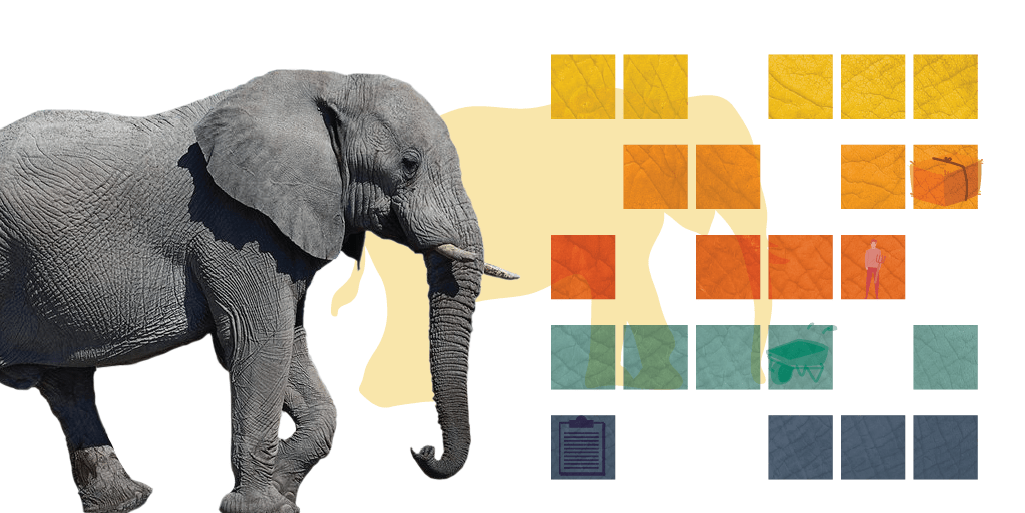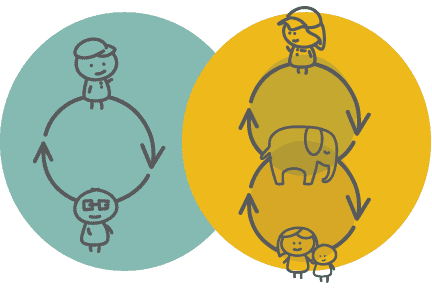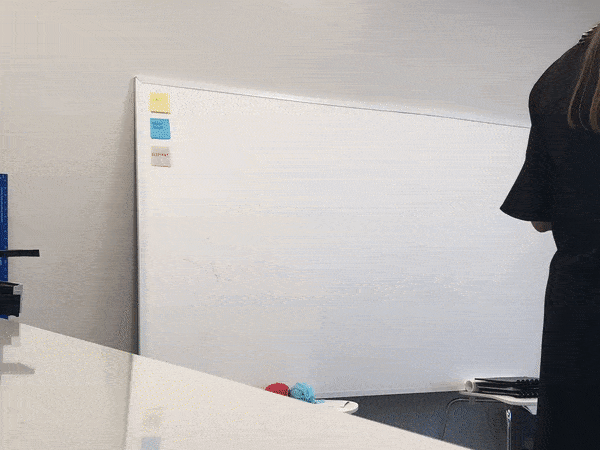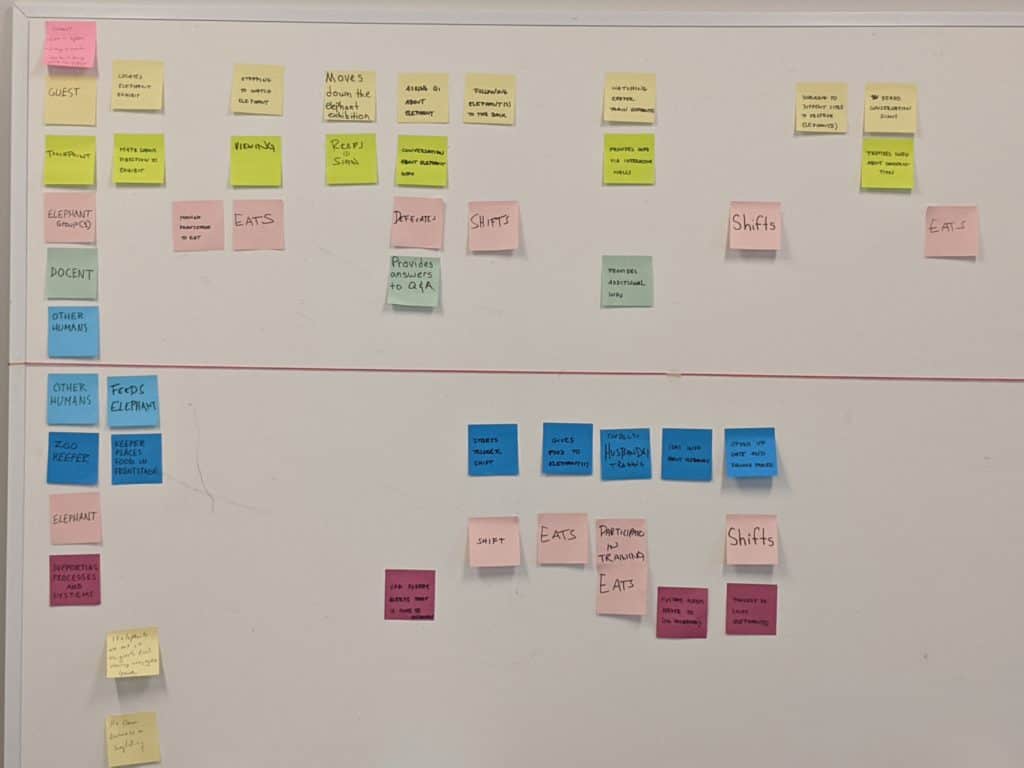
In Part One, we visited the zoo to test a new service safari framework. The framework was providing us a reference for the guest’s experience, but we started to wonder, what if we made the elephant the protagonist?
The setting and the actors at the zoo elicit novel design problems; not many of our clients need to be concerned with troubleshooting a tiger escape! We practice human-centered design by researching and designing for service providers and those who interact with those services, but what about the elephant in the room? Yes, I know it’s called human-centered, but what if, for this project, we expand it to animal-centered design? We set out to test the boundaries of service design by examining the experience of the elephant.
I held the designer role at the zoo for over 10 years, and part of my job included exhibit design. The exhibit design process is divided into the animal and guest sides. The guest side consisted of a multidisciplinary team including multimedia (design), animal care staff, curators, horticulture, maintenance, and education, with a rotating list of leaders dependent on focus. The animal side of the exhibit was usually outsourced to an architect, with input from some of the same zoo staff—mostly curatorial. While we attempted to bridge the animal and guest exhibit experience, the people and processes are primarily separate.
(Some notable exhibits blend the guest and animal spaces and even allow interactions outside of a petting zoo. For example, Philadelphia Zoo created a system of exhibitry that allows monkeys and tigers to traverse over the heads of the guest. The Indiana Zoo’s Simon Skjodt International Orangutan Center has an area where guests can play interactive games via a touchscreen with orangutans.)
While improving the guest experience was rewarding, I was more interested in enhancing the experiences the animals were having. As one does when curiosity piggybacks on an existential crisis, I decided to go back to graduate school (I kid, sorta)!
In school, my thesis focused on digital enrichment under the umbrella of animal-computer interaction (ACI). Broadly, ACI is about interactions between non-human users and technology, examining sensory range, cognition, communication, problem-solving, and culture. My research with orangutans relied on behavioral observation methods: is the individual expressing stereotypic behavior? It also looked at time spent with the interaction and feedback from their regular zookeepers.
This specific background with exhibits and ACI inspired what we did next.

Nonprofits take great measures to know their customers. During my time at the zoo, I could tell you the target guest had 2.5 children and came from certain counties in the Atlanta metro within a 35-minute commute. However, that same care and research rarely extended to nonprofit employees.
In service design, we emphasize researching and designing for the work done frontstage and backstage. Backstage, in this context, includes the actions and processes done by zoo employees and volunteers outside the view of the zoo guest. The purpose of understanding the employee/backstage experience is more than improving operations; it’s also a critical step to improving the frontstage guest experience. In the case of the zoo, digging into how a zookeeper works backstage can reveal opportunities to enhance the guest experience.
But what about the elephant? Should a service designer care about their experience? Could understanding them as a service actor better inform the design of the service?
In Donna Haraway’s The Companion Species Manifesto, she breaks down the animal-human divide by asserting the dog and human relationship is uniquely distinct, a ‘significant otherness.’ And while her manifesto focuses on the companion-animal relationship, I referenced it in my ACI work as the ability to use this novel lens to examine interactions with non-humans. Our hypothesis in this exploration understood the “other,” and its relationship and actions in its environment are essential to understanding and improving the service.
During our service safari mentioned in our previous post, we talked to an elephant zookeeper and asked them if they felt the elephants enjoyed their new exhibit. The zookeeper made a point that not only did it seem to him that the elephants were much happier, but it also made his job more manageable. For instance, the increased space allowed the elephants to distance themselves if there was an elephant squabble. However, it also made their zookeeping job more accessible by allowing more space for their equipment. With this in mind, it’s easy to see that a happier elephant could equate to a happy zookeeper.
Zoo guests also want to see a happy elephant. Guest’s expectations have evolved along with the modern zoo, and they expect the habitat to be large and enriching. Therefore designing a better experience for the elephant produces a better experience for zookeepers and guests alike.

In service design, we use service blueprinting to describe how services work overtime across multiple actors and touchpoints. The team saw service blueprinting as an excellent way to examine the non-human and human relationships in the elephant exhibit. This allows us to map touchpoints, processes, actions, and multiple actors—guest, zookeeper, docent, and elephant. We decided to blueprint a key scenario—midday, mild and sunny, not too crowded, and the elephant needed to move to the backstage area (the elephant barn). First, the team who experienced the service safari took the first pass at the blueprint through the lens of the guest as the main actor and then tested our findings with the zoo’s designer.
Through the exercise, we could see some compelling findings on our sticky notes. We can see how important food is for motivation for the elephant (look for the post-its labeled ‘eats’). The guest’s physical journey through the exhibit is highly influenced by the elephant’s actions, seen by the relation of actions between the elephant and the guest. We also noticed the lack of touchpoints in areas critical to the guest’s journey (no clear entrance sign, lack of wayfinding towards the barn, etc.).

The first row of the blueprint is the main actor we work with in mind—the protagonist. We considered focusing on the zookeeper to flesh out service design opportunities further. This would have included blueprinting additional zookeeper scenarios: start and end of the day, training exercises, or inclement weather procedures.
And here’s where things can get groovy – we can place the elephant in the main actor role. While we can’t interview the elephant, and we would have to be careful to avoid anthropomorphizing their behavior, we could use the same methods honed in my ACI research—behavior observation, timing interactions, and keeper insight. This could be useful not only for blueprinting but also journey mapping and other tools. Placing the elephant in the protagonist role might help illuminate problems and opportunities in creating a better experience for all zoo actors and guests. And it not only might help in obvious situations – such as building a new habitat, but it could also illuminate interactions such as feeding, training exercises, and enrichment activities. After all, the elephant experience should pull more weight in the design.